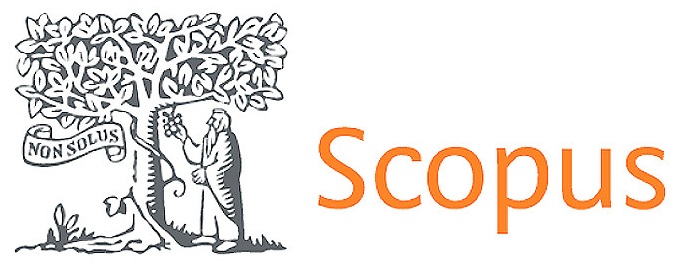The Effectiveness of the Work Based Learning Higher Order Thinking Skills Employability (Wbl-Hotse) Model on Student Learning Outcomes for 3T Regional Vocational High Schools
DOI:
https://doi.org/10.56294/dm2025651Keywords:
Effectiveness Model Learning, Work Based Learning, Higher Order Thinking Skills Employability, Ability Critical thinkingAbstract
Learning outcomes serve as a key indicator of the effectiveness of the teaching and learning process. In Vocational High Schools (SMK) located in underdeveloped, frontier, and outermost (3T) regions, students' knowledge-based learning outcomes remain relatively low. This study aims to examine the effect of implementing the Work-Based Learning Higher Order Thinking Skills Employability (WBL-HOTSE) model on students’ cognitive learning outcomes during practice-based instruction in vocational schools situated in 3T areas. The research employed a quasi-experimental method using a nonequivalent control group design. One class was taught using the scientific approach as the control group, while the experimental class received instruction through the WBL-HOTSE model. The research subjects consisted of all 11th-grade students at SMKN 1 Kepulauan Mentawai. Data were collected through a test instrument. Based on hypothesis testing using the t-test, the results showed a significant difference in learning outcomes between students who were taught using the WBL-HOTSE model and those who received instruction through the scientific approach. These findings indicate that the WBL-HOTSE model can be effectively applied in practice-based learning to improve students' higher-order thinking skills and learning outcomes.
References
[1] A. Oke and F. A. P. Fernandes, “Innovations in teaching and learning: Exploring the perceptions of the education sector on the 4th industrial revolution (4IR),” J. Open Innov. Technol. Mark. Complex., vol. 6, no. 2, p. 31, 2020, doi: 10.3390/JOITMC6020031.
[2] C. Y. Tan, A. G. K. Abdullah, and A. J. Ali, “Soft skill integration for inspiring critical employability skills in private higher education,” Eurasian J. Educ. Res., vol. 2021, no. 92, pp. 23–40, 2021, doi: 10.14689/ejer.2021.92.2.
[3] I. Imron, K. M. Khambali, A. S. Rifai, and I. Nugroho, “Development of A Soft Skills-Based Learning Model With A Behavioristic Approach,” J. Tarbiyatuna, vol. 12, no. 2, pp. 108–120, 2021, doi: 10.31603/tarbiyatuna.v12i2.6018.
[4] N. Ismiyati and U. Mulbar, “ICSAT INTERNATIONAL PROCEEDING,” vol. 11, no. 1, pp. 15–25, 2022.
[5] A. F. Andikos, “Work-Based Learning Independent Learning ( WBL-MB ): optimizing Learning Models Based on the Industrial World Aprendizaje basado en el trabajo Merdeka Belajar ( WBL-MB ): optimization of basic learning models in the industrial world,” 2024, doi: 10.56294/dm2024.415.
[6] Ambiyar, Ganefri, Suryadimal, N. Jalinus, R. Efendi, and Jeprimansyah, “Development of work based learning (WBL) learning model in heat transfer courses,” J. Phys. Conf. Ser., vol. 1481, no. 1, 2020, doi: 10.1088/1742-6596/1481/1/012113.
[7] B. Sudarsono, “Development of Work-Based Learning Models Based on Work Readiness (WBL-WoRe),” J. Iqra’ Kaji. Ilmu Pendidik., vol. 7, no. 1, pp. 44–62, 2022, [Online]. Available: https://doi.org/10.25217/ji.v7i1.2118
[8] S. Suyitno and P. Pardjono, “Integrated work-based learning (I-WBL) model development in light vehicle engineering competency of vocational high school,” J. Pendidik. Vokasi, vol. 8, no. 1, p. 1, 2018, doi: 10.21831/jpv.v8i1.14360.
[9] Ruth Helyer, “Learning through reflection: the critical role of reflection in work-based learning (WBL),” J. Work. Manag., vol. 7, no. 1, pp. 15–27, 2015, doi: https://doi.org/10.1108/JWAM-10-2015-003.
[10] D. Major, “Models of work-based learning, examples and reflections,” J. Work. Manag., vol. 8, no. 1, pp. 17–28, 2016, doi: 10.1108/JWAM-03-2016-0003.
[11] S. Suyitno, Y. Kamin, D. Jatmoko, M. Nurtanto, and E. Sunjayanto, “Industrial Apprenticeship Model Based on Work-Based Learning for Pre-service Teachers in Automotive Engineering,” Front. Educ., vol. 7, 2022, [Online]. Available: https://www.frontiersin.org/journals/education/articles/10.3389/feduc.2022.865064
[12] S. Ismail, M. M. Mohamad, N. Omar, Y. M. Heong, and T. T. Kiong, “A Comparison of the Work-based Learning Models and Implementation in Training Institutions,” Procedia - Soc. Behav. Sci., vol. 204, no. November 2014, pp. 282–289, 2015, doi: 10.1016/j.sbspro.2015.08.153.
[13] B. Rienties, B. Divjak, F. Iniesto, K. Pažur Aničić, and M. Žižak, “Online work-based learning: A systematic literature review,” Int. Rev. Educ., vol. 69, no. 4, pp. 551–570, 2023, doi: 10.1007/s11159-023-10008-y.
[14] Sudjimat, D. A. Tuwoso, and L. C. Permadi, “Impact of Work and Project-Based Learning Models on Learning Outcomes and Motivation of Vocational High School Students,” Educ. Sci. Theory Pract., vol. 21, no. 2, pp. 131–144, 2021, doi: 10.12738/jestp.2021.2.009.
[15] M. Amish, S. Jihan, and A. Wyatt, “Models of Work-Based Learning with Examples of Practice in Petroleum Engineering – A University-Employer Partnership,” pp. 33–49, 2023, doi: 10.33422/4th.globalet.2023.04.103.
[16] M. S. Andikos, Adi Fitra; Giatman, “WORK-BASED EDUCATION MERDEKA BELAJAR PROGRAMS ( WBL-MB ) AND INNOVATIVE LEARNING CAPABILITIES : CREATION OF INSTRUMENS FOR ASSESSMENT TO ASSESS,” vol. 21, no. 06, pp. 2817–2830, doi: 10.5281/zenodo.12622499.
[17] D. Faiza, “Journal of applied linguistics.,” J. Appl. Linguist., vol. 1, no. 1, pp. 75–91, 2020, [Online]. Available: https://sshelco-primo.hosted.exlibrisgroup.com/primo-explore/fulldisplay?docid=TN_equinoxoai_www_equinoxpub_com_article_648&context=PC&vid=WCHESTER&lang=en_US&search_scope=default_scope&adaptor=primo_central_multiple_fe&tab=default_tab&query=creator,exact
[18] M. S. Barliana, L. Alhapip, Y. Rahmawati, and V. Dwiyanti, “Vocational Education: The New Development and Change in the Adaptive Curriculum of Learning Model,” Invotec, vol. 16, no. 2, pp. 160–173, 2020, doi: 10.17509/invotec.v16i2.28479.
[19] E. S. Kurniawan, Mundilarto, and E. Istiyono, “Improving student higher order thinking skills using Synectic-HOTS-oriented learning model,” Int. J. Eval. Res. Educ. , vol. 13, no. 2, pp. 1132–1140, 2024, doi: 10.11591/ijere.v13i2.25002.
[20] S. Arif, “Higher Order Thinking Skills (HOTS) Analysis on Teachers’s Questions in the Final Examination of Bahasa dan Sastra Indonesia at Senior High School 7 Medan,” Budapest Int. Res. Critics Linguist. Educ. J., vol. 2, no. 4, pp. 172–178, 2019, doi: 10.33258/birle.v2i4.504.
[21] O. Dwi Rismi, “A Learning Design to Improve Higher Order Thinking Skills (HOTS),” J. Ris. Pendidik. Mat. Jakarta, vol. 3, no. 2, pp. 34–41, 2021, doi: 10.21009/jrpmj.v3i2.22265.
[22] A. Rozi et al., “The fullness of Higher Order Thinking Skills (HOTs) in Applied Science Textbooks of Vocational Schools,” J. Phys. Conf. Ser., vol. 1764, no. 1, 2021, doi: 10.1088/1742-6596/1764/1/012143.
[23] A. Yuhelmi, Mawardi Effendy, Ridwan, Walhidayat, Raja Syamsidar, Adi Fitra Andikos, “Practicality of syntax soft skill-based learning ( Ss-BL ): a new model in web-based entrepreneurship learning Practicidad de la sintaxis del aprendizaje basado en habilidades interpersonales ( Ss-BL ): un nuevo modelo de aprendizaje empresarial basado en,” 2024, doi: 10.56294/dm2024.407.
[24] A. Bahl and A. Dietzen, Work-based Learning as a Pathway to Competence-based Education. 2019.
Downloads
Published
Issue
Section
License
Copyright (c) 2025 Hartanto, Dimas Adi Prasetyo , Adi Fitra Andikos , Lesis Andre , Elvi Syofiana , Muhammad Amin (Author)

This work is licensed under a Creative Commons Attribution 4.0 International License.
The article is distributed under the Creative Commons Attribution 4.0 License. Unless otherwise stated, associated published material is distributed under the same licence.




